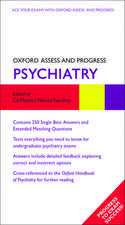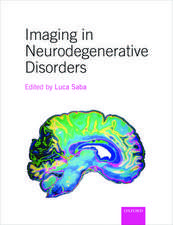Foundations of Aversion Therapy
Autor N.H. Hadleyen Limba Engleză Paperback – 13 feb 2012
Preț: 339.00 lei
Preț vechi: 356.84 lei
-5% Nou
Puncte Express: 509
Preț estimativ în valută:
64.88€ • 67.02$ • 53.99£
64.88€ • 67.02$ • 53.99£
Carte disponibilă
Livrare economică 05-19 martie
Livrare express 18-22 februarie pentru 24.82 lei
Preluare comenzi: 021 569.72.76
Specificații
ISBN-13: 9789401167093
ISBN-10: 9401167095
Pagini: 172
Ilustrații: 145 p.
Dimensiuni: 152 x 229 x 9 mm
Greutate: 0.24 kg
Ediția:Softcover reprint of the original 1st ed. 1985
Editura: SPRINGER NETHERLANDS
Colecția Springer
Locul publicării:Dordrecht, Netherlands
ISBN-10: 9401167095
Pagini: 172
Ilustrații: 145 p.
Dimensiuni: 152 x 229 x 9 mm
Greutate: 0.24 kg
Ediția:Softcover reprint of the original 1st ed. 1985
Editura: SPRINGER NETHERLANDS
Colecția Springer
Locul publicării:Dordrecht, Netherlands
Public țintă
ResearchCuprins
1. Classical and Instrumental Conditioning: Principles and Procedures.- Classical Conditioning Paradigm.- Instrumental Conditioning Paradigm.- Conditioning Paradigms: Comparisons and Distinguishing Features.- Experimental Procedures in Classical Conditioning.- Control Procedures in Classical Conditioning.- Rescorla-Wagner Model.- Second-Order Conditioning.- Habituative and Associative Factors.- Environmental and Cognitive Determinants of UCR and CR.- Constraints on Learning.- Preparedness in Classical Conditioning.- 2. Aversive Control of Behavior: Paradigms and Research.- Experimental Procedures.- Operant-Pavlovian Interactions in Aversion Therapy.- Escape Learning: Theory and Research.- Predictable vs. Unpredictable Aversive Stimulation.- Characteristics of an Effective Aversive Stimulus.- Problems and Ethical Issues.- Pain Threshold and Pain Tolerance.- Safety Considerations in Faradic Aversion Therapy.- 3. Screening and Masking Techniques in Aversion Therapy.- Facial Screening: Introduction.- Critical Components of Facial Screening.- Advantages and Limitations of Facial Screening.- Self-Application of Facial Screening.- Visual Screening.- Theoretical Explanations of Facial Screening.- Issues and Guidelines in the Use of Screening.- Sensory Extinction: Introduction.- Advantages of Sensory Extinction.- Limitations of Sensory Extinction.- Reinforcing Function of Self-Stimulation.- 4. Theories of Aversive Control of Behavior.- Classical Conditioning.- Change in Valence or Function of Deviant Stimulus.- Attitude Change.- Cognitive Dissonance.- Incubation of Fear and Cognitive Rehearsal.- State Theory.- Two-Factor Theory.- Biological Theory.- Cognitive Theory.- 5. Personality and Conditionability.- Pavlov’s Theory.- Eysenck’s Personality Classification.- Differencesbetween Pavlov’s and Eysenck’s Classifications.- Strong and Weak Nervous Systems.- Relation of Introversion-Extroversion to Sensory Thresholds and Pain Tolerance.- Reactive and Conditioned Inhibition.- Introversion-Extroversion and Conditionability.- Eysenck’s Biological Theory of Personality.- Sokolov’s Theory of Attention.- Differential Effects of Stimulant and Depressant Drugs on Introverts and Extroverts.- Yerkes-Dodson Law.- References.- Name Index.
















